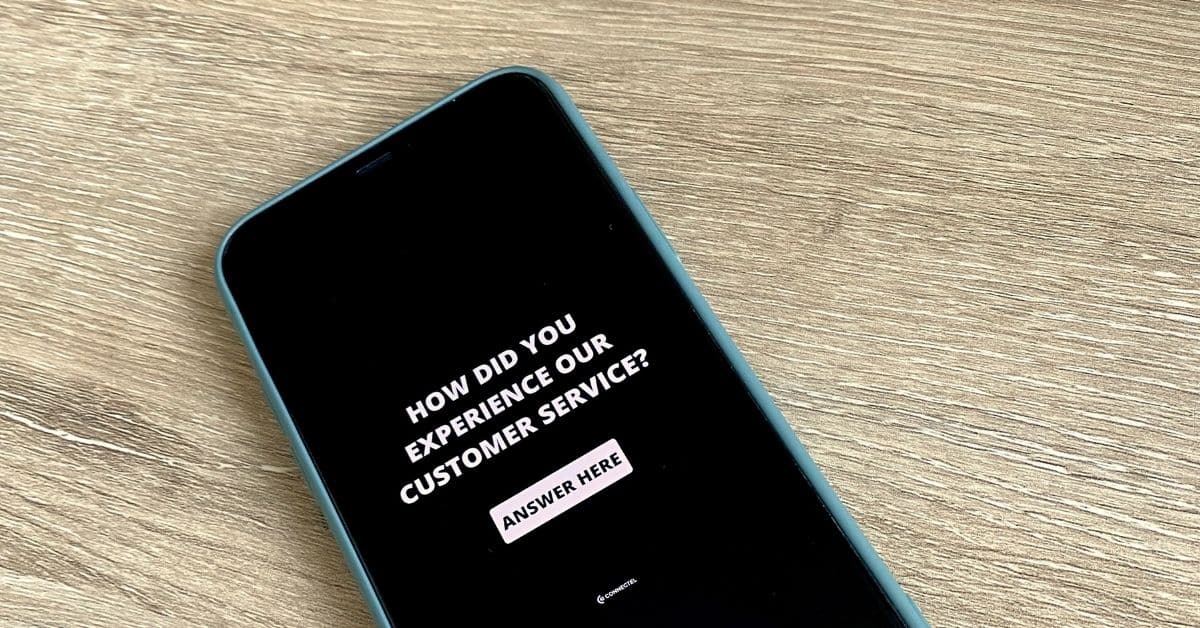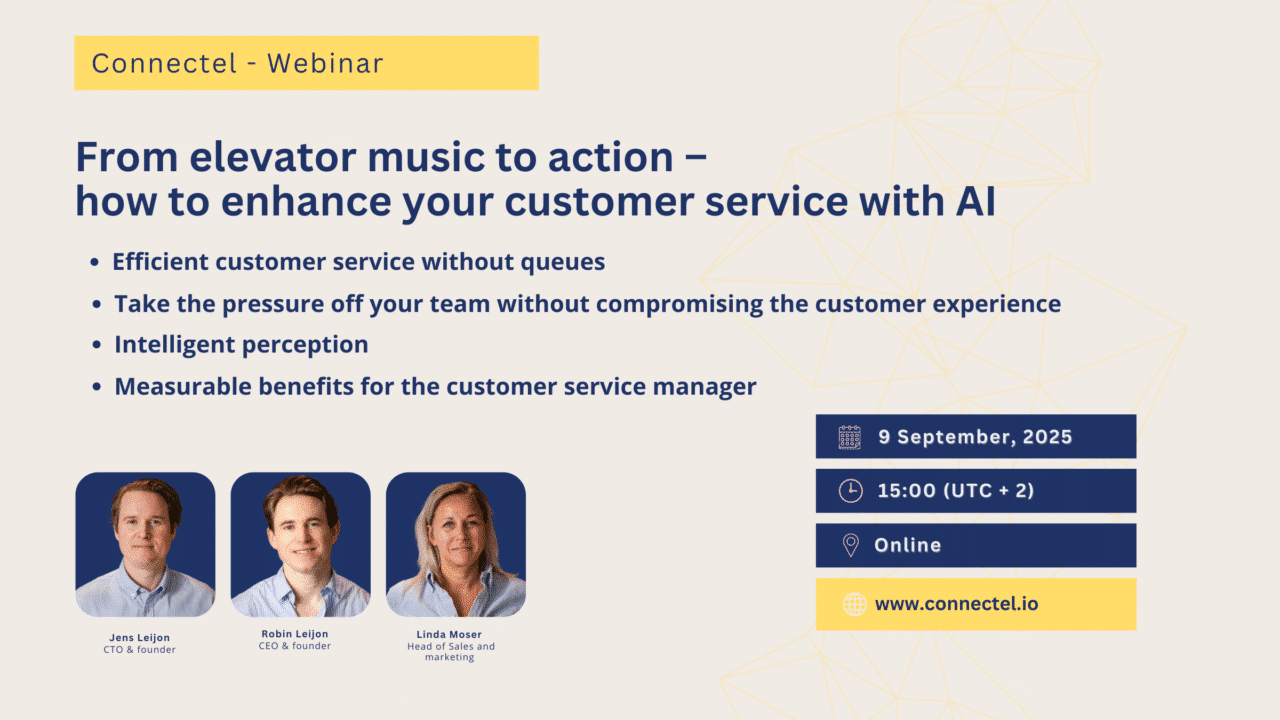
Measure customer satisfaction with surveys
Why and how to measure customer satisfaction?
The mailbox is full and you still have a lot left to do both at work and at home. That’s when you get an email with a customer survey from a company you have recently been in contact with. What do you do? Put the customer survey on the to-do list or delete the email because there are too many questions in the survey and it will take up too much of your time? Maybe you don’t even know how long it takes to complete the survey.
The time when we happily participated in a customer survey is long gone. Today it’s not enough to just send out a customer survey and hope for an answer. If you want to receive any answers at all and measure customer satisfaction levels, your survey needs to stand out from all the other information they are bombarded with.
Today it’s more important than ever to measure customer satisfaction. Companies and organizations constantly need to strive to improve and a part of that is to collect useful high-quality information. With the help of customer surveys and for the information to be useful – you need high response rates.
Succeed with customer satisfaction
The companies that succeed in creating loyal customers have a better chance to survive, and customer service is where you have the best chance to create loyal repeat customers. Let’s say you need new running shoes, you google “running shoes”, find a pair you like, order them online and get them delivered to your home. Smooth and easy, but does that make you a loyal customer? Can you even remember the name of the company you ordered the shoes from? Maybe, maybe not. However, if something goes wrong and you need to contact customer service, if that contact is fantastic and they exceed your expectations, there is a good chance that you will remember their name. Maybe you will even become a loyal customer and never buy running shoes or training gear from anyone else again.
The most unsatisfied customers are the ones who can become your most satisfied customers if you manage to not only help them but to exceed their expectations. Companies have everything to gain by providing professional customer service. A customer service that is there for the customers when it really matters, when things go wrong.
To the customer survey guide:
Increased customer satisfaction leads to increased profitability
A study made by the Stockholm School of Economics and Chalmers University of Technology, shows after 30 years of collecting data from thousands of companies in various industries in Sweden, that 1% increased customer satisfaction gives 5% increased profitability. Customer service has a key role here since they often are in contact with dissatisfied customers, and has the ability to turn them into the best ambassadors.
How do I get the customers to give us the feedback I need?
Let’s say you regularly send out customer surveys and you use the feedback to improve your internal processes and promote customer loyalty. All companies should do this. But far from all respondents fill in the survey, and you know that if they did you would get better insights which could help you get better results.
Many companies conduct some form of customer survey to measure customer satisfaction, but far from everyone gets as many answers as they could. Some say a 10-20% response rate is an average but is that enough to base important decisions on?
Often we are more likely to respond to a survey if we have been affected in some way. Either in a negative way, maybe because we are upset about something that has gone wrong or about the way customer service has treated us and want to share that so that the company can do something about it to improve. Or in a positive way, that our expectations were exceeded and we want to boost this company and reinforce what they do well.
Another factor that affects the response rate is how aware your target group is of your brand, the better their connection is with you, the higher the response rate. But reasonably satisfied customers who don’t have a strong connection to your brand will rarely feel prompted to answer a customer survey, especially not if it contains 10 questions or more. Questions that do not always feel relevant to the customer. You need to trigger your customers’ motivation to spend their time and energy answering your questions.
What is a good response rate?
The response rate for customer surveys via email has dropped significantly over the past 20 years. As many as 66% would rather give feedback voluntarily.
The company Brilliant Future has worked with customer surveys for many years and can see that the response rate for their customers in different industries has been at about the same level for the past three years. They also experience that those customers who really want to express an opinion, regardless of whether it’s positive or negative, are happy to do so.
Depending on what you want to use the customer feedback for, only you can decide what is a good response rate for you.
Increase response rate and gain valuable insights
Case studies show that 52% of participants drop out if it takes more than 3 minutes to complete a survey. A common mistake is to ask too many questions because you think it shouldn’t take the customer that long to answer them. We live in a world where most things are digital, not everyone has time to answer your survey. But it’s still possible to get a high response rate.
Steps to get the most out of your customer survey:
1. Find out what obstacles may exist and try to eliminate or avoid them
2. Get to know your target audience
3. Make the survey simple and relevant
With a higher response rate, you get valuable insights that can be used to develop the organization and the company in the right direction.
Would you take the survey?
There are smart ways to minimize obstacles and create good surveys with high response rates that reach your target audience. Start by thinking about what makes you respond to a survey. When do you choose not to answer a customer survey and why?
Can you see a pattern? For example, do you answer surveys from those companies that you have a long term relationship with, such as your bank or mobile operator, but not the ones you have made a one-time purchase from and maybe just have been in contact with to find out when the goods will be delivered? Do you, perhaps unknowingly, answer when you get a more personal contact, for example when the company that contacts you use your name instead of “Dear customer”? Ask your colleagues as well what makes them answer surveys, maybe even your customers.
Read about Connectel’s survey module here and learn more about how to get the most out of your customer surveys in the downloadable guide below.
Gain valuable insights by using a strong measuring and survey tool


